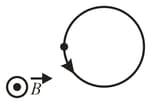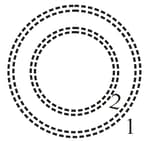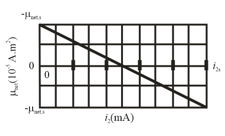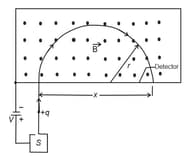A proton traveling at with respect to the direction of the magnetic field of strength experiences a magnetic force of Calculate (a) the proton's speed, (b) its kinetic energy in electron-volts, and (c) its momentum. Take, mass of proton = and .

Important Questions on Magnetic Fields
In the figure given below, a particle moves along a circle in a region of uniform magnetic field with a magnitude of . The particle is either a proton or an electron (you must decide what it is). It experiences a magnetic force of magnitude What is (a) the particle's speed (b) the radius of the circle, and (c) the period of the motion?

An electron of kinetic energy circles in a plane perpendicular to a uniform magnetic field. The orbit's radius is Find
(a) the electron's speed,
(b) the magnetic field magnitude,
(c) the circling frequency, and
(d) the period of the motion.
(e) Through what potential difference will the electron have to be accelerated from rest to reach this kinetic energy?
In a certain cyclotron, a proton moves in a circle of radius The magnitude of the magnetic field is .
(a) What is the oscillator frequency?
(b) What is the kinetic energy of the proton, in electron-volts?
Take the mass of proton =
Estimate the total path length travelled by a deuteron in a cyclotron of radius and operating frequency during the (entire) acceleration process. Assume that the accelerating potential between the dees is . The magnitude of the magnetic field is .
(d) What is the magnitude of the net force on the loop?
In figure (a), two concentric coils, lying in the same plane, carry currents in opposite directions. The current in the larger coil is fixed. Current in coil can be varied. Figure (b) gives the net magnetic moment of the two-coil system as a function of . The vertical axis scale is set by, and the horizontal axis scale is set by, . If the current in coil is then reversed, what is the magnitude of the net magnetic moment of the two-coil system when


A mass spectrometer (fig.) is used to separate uranium ions of mass and charge from related species. The ions are accelerated through a potential difference of and then pass into a uniform magnetic field, where they are bent in a path of radius . After traveling through and passing through a slit of width and height they are collected in a cup. (a) What is the magnitude of the (perpendicular) magnetic field in the separator? If the machine is used to separate out of material per hour, calculate (b) the current of the desired ions in the machine and (c) the thermal energy produced in the cup in .

